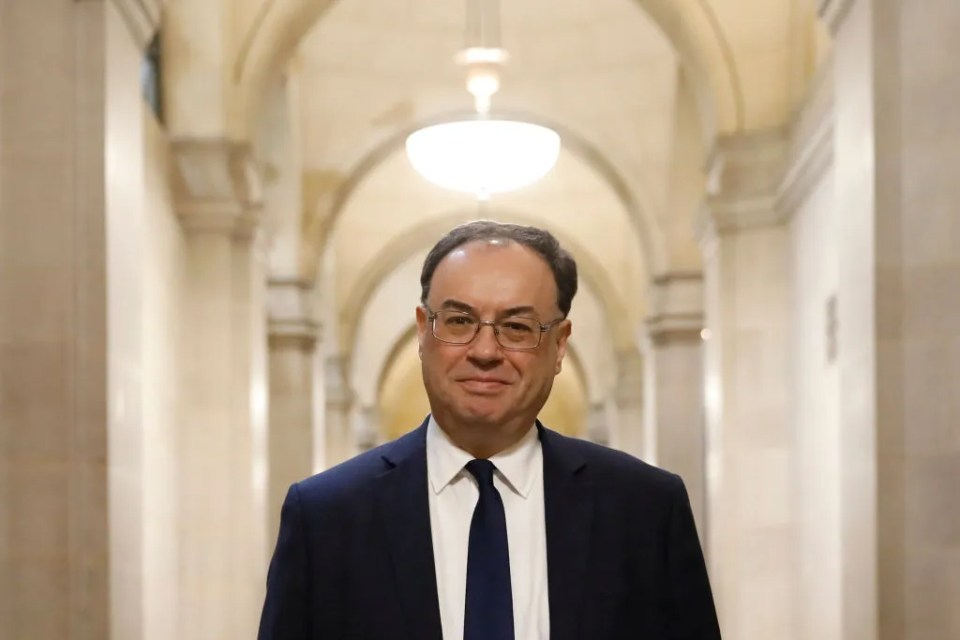Interest rates tug of war may leave markets, and consumers, disappointed

The path of the economy in 2024 will be defined by the trajectory of interest rates. But unlike 2023, when the interest rates also dominated the conversion, the question this time will not be how high will rates go, but when will they be cut?
In the UK, the Bank of England and financial markets have come to different conclusions on this question about interest rates.
Ask an MPC member and they will likely tell you it’s “too early” to talk about cutting interest rates.
The markets meanwhile think interest rates will start to be cut in the first half of this year, probably in May, with the Bank Rate falling to four per cent by the year’s end.
So who’s right?
The Bank’s reasoning for keeping interest rates higher for longer was laid out in November’s Monetary Policy Report.
In the report, the Bank forecast inflation would only return to its target of two per cent by the end of 2025. A tight labour market was likely to fuel higher wage growth, it argued.
The only problem is inflation has already fallen significantly since then, including in some of the key areas that the Bank identified as risks, such as services inflation.
In the November forecast, the Bank thought inflation would have reached 4.6 per cent by now. It has already fallen to 3.9 per cent. Services inflation was expected to be hanging around seven per cent, but it has declined for two straight months to hit 6.3 per cent.
But the fact that three MPC members voted to hike interest rates again at the last meeting suggests the Bank’s rhetoric is not a show. The problem is it doesn’t look credible anymore.
Wage growth has also pulled back from its recent peaks, although there is some uncertainty around the data.
It is worth noting that the Bank can effectively talk away some of its hard work if it were to turn dovish too soon, so there’s logic in presenting a firmer view than it thinks is really necessary.
But the fact that three MPC members voted to hike interest rates again at the last meeting suggests the Bank’s rhetoric is not a show. The problem is it doesn’t look credible anymore.
So does that mean markets are right and 2024 will see a rapid unwinding in monetary policy? This also seems too optimistic.
The headline rate of inflation has now come close to the two per cent target, but a large part of the fall in inflation comes from base effects – the impact the starting point for a yearly change can have on the result of the comparison.
Energy prices increased rapidly in October 2022 so the figures for October 2023 were flattered as this year’s prices were being compared to a higher starting point.
The susceptibility of the headline rate of inflation to statistical quirks is why the Bank prefers to focus on other measures, like services inflation and wage growth. And while there has been progress, they are still too high to declare victory just yet.

As a reminder, services inflation is at 6.3 per cent and wage growth is at 7.3 per cent. In the Bank’s most recent survey of CFOs, expectations for wage growth next year were actually slightly higher than last month.
Theoretically, the domestic components of inflation are by far the most important thing that the Bank should be thinking about when setting monetary policy. Aggressively loosening policy when domestic pressures have not yet been tamed risks a resurgence.
There are also external risks to the continued fall in inflation rates.
The Conservatives will almost certainly announce another round of tax cuts in the Spring Budget in an attempt to boost their flagging election hopes. This could add fuel to the inflationary fire.
Growing geopolitical tensions and the impact this could have on global energy prices remain a concern too.
To cut a long story short, the market view essentially is pricing in a steady and smooth fall in inflation rates over the coming year. At this moment in time, there are more than enough reasons – from residual domestic pressures to a large fiscal loosening – why markets might be disappointed.